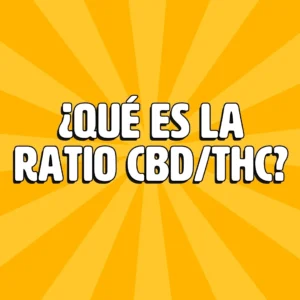CBN, or cannabinol, is one of the many cannabinoids present in the cannabis plant. Unlike compounds such as CBD or THC, CBN does not come directly from the plant, but is formed from the degradation of THC, especially when the plant is exposed to light and heat. This oxidation process transforms THC into CBN, giving it unique properties and a special affinity for certain receptors in the human body.
Differences Between CBN and Other Cannabinoids Like CBD and THC
CBN is a less popular cannabinoid than others, but it has special benefits. Unlike CBD, which doesn’t cause any effects on the mind, CBN may have a mild relaxing effect, although not as strong as other components like THC. Although CBN has a low affinity for CB1 receptors (which is why it doesn’t have a psychoactive effect), it connects more easily with CB2 receptors, making it more useful for regulating the immune system and reducing inflammation.
Comparison Between CBD, CBN, and CBG
|
CBN (Cannabinol) |
CBD (Cannabidiol) |
CBG (Cannabigerol) |
|
|
Origin |
It is formed by the degradation of THC over time. |
Derived directly from hemp and CBD-rich varieties. |
It is converted into other cannabinoids during the growth of the plant. |
|
Possible Effects |
Sedative and sleep. |
Relaxing and anti-inflammatory. |
Appetite-stimulating and anti-inflammatory potential. |
|
Availability in the Plant |
It is found in low concentrations in the aged plant. |
It is found in higher concentrations in many varieties. |
It is found in low concentrations in most strains. |
|
Psychoactivity |
It is not psychoactive. |
It is not psychoactive. |
It is not psychoactive. |
|
Interaction with Receptors |
It interacts mainly with CB2 receptors. |
Interaction mainly with non-psychoactive receptors. |
Interaction with CB1 and CB2 receptors. |
CBN (Cannabinol)
Origin
It is formed by the degradation of THC over time.
Effects
Sedative and sleep.
Availability at the plant
It is found in low concentrations in the aged plant.
Psychoactivity
It is not psychoactive.
Interaction with receptors
It interacts mainly with CB2 receptors.
CBD (Cannabidiol)
Origin
Derived directly from hemp and CBD-rich varieties.
Effects
Relaxing and anti-inflammatory.
Availability at the plant
It is found in higher concentrations in many varieties.
Psychoactivity
It is not psychoactive.
Interaction with receptors
Interaction mainly with non-psychoactive receptors.
CBG (Cannabigerol)
Origin
It is converted into other cannabinoids during the growth of the plant.
Effects
Appetite-stimulating and anti-inflammatory potential.
Availability at the plant
It is found in low concentrations in most strains.
Psychoactivity
It is not psychoactive.
Interaction with receptors
Interaction with CB1 and CB2 receptors.
Benefits of CBN
- Sleep Benefits: Studies indicate that CBN could improve sleep quality by interacting with the endocannabinoid system, which regulates key biological functions such as the circadian cycle. A clinical trial from Radicle Science and the University of California–Los Angeles (UCLA) evaluated three doses of CBN (25, 50, and 100 mg), showing significant improvements in sleep and a reduction in stress at the 100 mg dose, with no relevant side effects, using the PROMIS scale to measure the results.
- Anti-inflammatory properties: CBN may reduce inflammation by decreasing inflammatory molecules such as TNF and interleukins. In studies with mice, it has been observed that it can help reduce inflammation in allergic and skin diseases, such as dermatitis and acne.
- Appetite stimulation: Unlike CBD, CBN appears to stimulate appetite, which could be helpful for people suffering from problems that affect appetite.
Although initial studies suggest that CBN has anti-inflammatory, analgesic, and appetite-stimulating properties, more scientific research is still needed to confirm these effects and determine its safety and efficacy in specific medical treatments.
Studies on Cannabinoids
Cannabinoids have captured attention due to their potential for a variety of conditions. These substances interact with the endocannabinoid system, a signaling system in the body that regulates functions such as pain, appetite, mood, and inflammatory response. The most studied cannabinoids, such as THC and CBD, have shown benefits in treating conditions such as pain.
The use of cannabinoids for pain management has been shown to be effective, especially in patients with chronic pain resistant to other treatments. Mechanisms of action include modulation of CB1 and CB2 cannabinoid receptors, which are distributed in areas of the central and peripheral nervous system, helping to reduce the transmission of pain signals. In addition, cannabinoids can interact with other receptors, such as opioids and serotonin receptors, expanding their therapeutic potential.
CBN Regulations and Legality
The regulatory framework around CBN varies by jurisdiction, as many laws do not clearly differentiate it from THC or CBD. The best thing to do is to go to the regulation of your country.
Permitted modes of use:
In Spain, the regulation of CBN and other cannabinoids has some restrictions, especially compared to CBD. Currently, the Spanish legal framework allows the use of CBN in certain applications, but with specific limitations.
- Cosmetics: CBN can be legally used in cosmetic products, such as creams and balms, as long as these products comply with safety and labeling regulations for cosmetics. It is mandatory for the THC content to be less than 0.2% to comply with industrial hemp regulations. However, CBN products are not allowed to be marketed for ingestion or inhalation, limiting their use primarily to topical applications to the skin.
- Research & Development: CBN can be used for scientific or medical research purposes. Companies wishing to grow cannabis with low THC content (less than 0.2%) for research must obtain the relevant licenses from the Spanish Agency for Medicines and Health Products (AEMPS), which strictly oversees these activities. This allows for the development of new products and applications, but does not enable market access for direct human consumption.
- Magisterial Formulas in Medical Settings: Spanish regulations allow the use of standardized cannabis preparations in compounding formulas, but it is limited to specific medications such as Sativex and Epidiolex, which are approved for specific conditions (such as multiple sclerosis and some forms of epilepsy). The use of CBN in this context has not been authorized for formulations other than those already approved by the AEMPS, and flowers or other non-standardized forms of cannabis are excluded from the current regulation.
Bibliography
- MDPI. (2024). A Randomized, Double-Blind, Placebo-Controlled Trial to Assess the Effectiveness and Safety of Melatonin and Three Formulations of Floraworks Proprietary TruCBN™ for Improving Sleep
- BMJ Open. (2023). Cannabinol (CBN; 30 and 300 mg) effects on sleep and next-day function in insomnia disorder
- MDPI. (2023). Cannabinoids in Medicine: A Multifaceted Exploration of Types, Therapeutic Applications, and Emerging Opportunities in Neurodegenerative Diseases and Cancer Therapy
- Health Psychology Research. (2021). Cannabinoids and Their Role in Chronic Pain Treatment: Current Concepts and a Comprehensive Review
- United Nations Office on Drugs and Crime. (2009). Manual for the Development of Cannabis Use Prevention Programs (Drug Use Prevention Handbook and Guidance Series No. 4).
- The Cannabis Web. (2024). Cannabis and CBD Legislation in Spain 2024: Consumption and Production
- Medical Gazette. (2024). Challenges in the legalization of medical cannabis 2024
- ConSalud. (2024). Health advances in the regulation of the use of cannabis for therapeutic purposes













